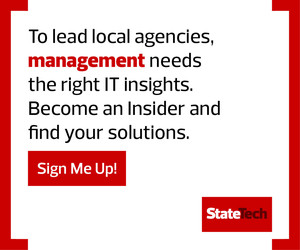Agencies Can Achieve Enterprisewide Transparency
An EPM program gives organizations visibility into their portfolios so that they can communicate to everyone in the organization, from frontline workers to leadership, what’s happening and who is accountable for what. Visibility also helps create balanced portfolios. Organizations can get too caught up in just running the business instead of focusing on innovation, or vice versa. This leads to a portfolio that’s unbalanced based on organizational objectives and doesn’t set up agencies for success.
With a clear, enterprisewide view of things, organizations can categorize investments based on their projected ROI or purpose to see if a portfolio is properly balanced to achieve goals. This also helps resolve any resourcing conflicts.
There’s a whole area of tooling required to consolidate and organize data. At CDW, we’ve made investments in tools and technologies that track, tag and organize the work that we do so that we have enterprisewide visibility. We track this down to the individual level, where workers allocate time against specific portfolio items.
It’s a hierarchy: At the bottom, organizations have people doing the work, allocating time to projects, which roll up into larger chunks of work, which get put into a portfolio. It’s a way of tracking time all the way up and down the organization.
LEARN MORE: How ServiceNow drives improvements in municipal IT service management.
Best Practices for Establishing an EPM Model
There’s an art to enterprise portfolio management. In terms of implementing an EPM model, the process must fit the organization’s culture and objectives. For example, if an organization isn’t agile, it shouldn’t use agile project management strategies. Leaders need to be honest about the type of organizations they’re part of and what the right models are for their portfolios. This is why developing an EPM model should start with clear goals.
Another important element that we’ve found useful at CDW is getting the right business stakeholders to buy in and sign off on relevant portfolios. When we bring big projects into a portfolio, we work with a vice president in the business who’s sponsoring that project and is invested in its success. The last thing an agency wants is a portfolio of projects that stakeholders don’t want or understand. IT teams and the business should be working together in terms of driving the projects forward.
Part of getting buy-in is providing strategic analysis on top of a portfolio. What’s the story an agency is trying to tell? What are the objectives it is trying to accomplish? Agencies must be able to organize and analyze data to show stakeholders why a portfolio is worth an investment. Data should be self-service and accessible; platforms such as ServiceNow can help facilitate.
Of course, agencies need the right personnel to provide analyses of their portfolios. This isn’t something officials can automate, as it requires an understanding of an organization, its technology and its priorities. Managers should distill a portfolio down to its key elements. This gives stakeholders a narrative to share with their executive committees and boards of directors.
Agencies also should have governance checkpoints with finance in place to monitor the health of portfolios and where investments are going. At CDW, we have similar checkpoints with our CFO. From there, we seek guidance in terms of next steps. Should we reduce the portfolio? Should we prioritize? Where should we stop investing?
Typically, we coordinate these checkpoints with our planning windows. We run something called safe agile, which is essentially quarterly planning. During the beginning and the end of those planning processes, we’re syncing with finance and with the business to make sure we’re all aligned.
This article is part of StateTech’s CITizen blog series. Please join the discussion on Twitter by using the #StateLocalIT hashtag.












